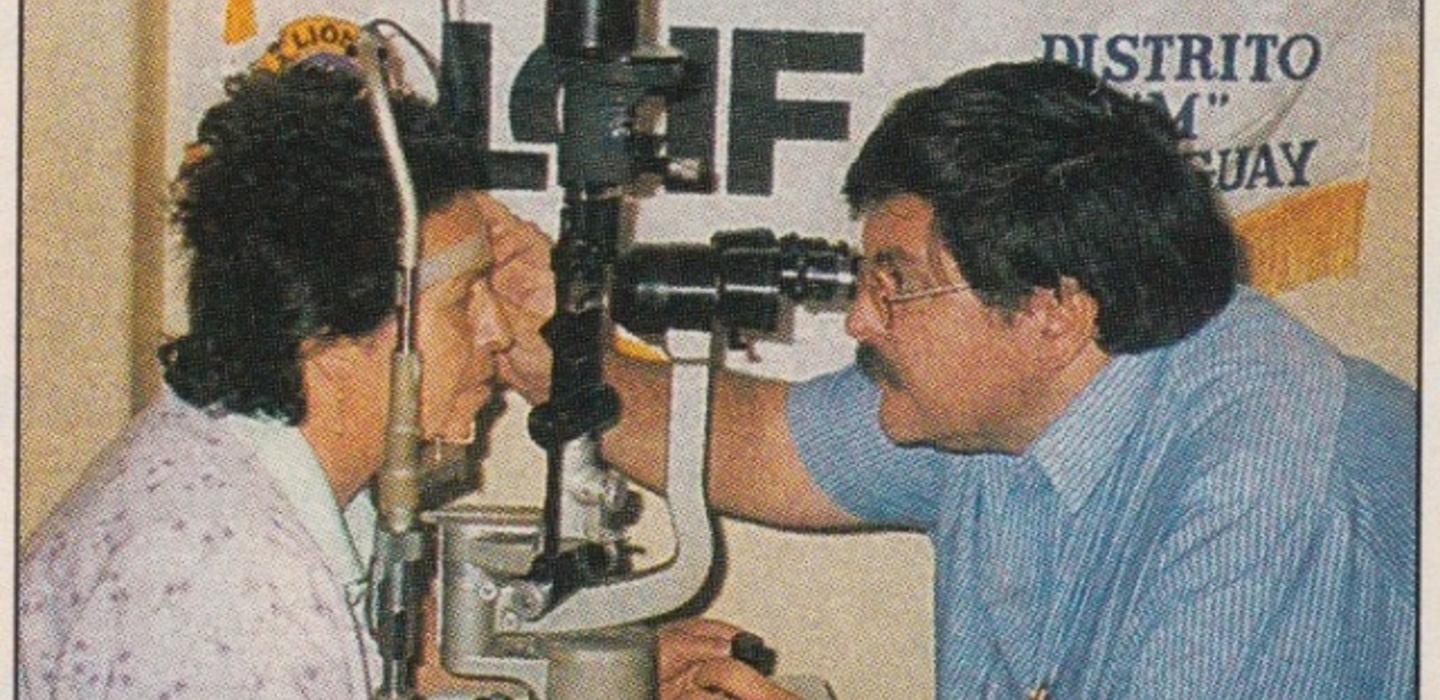“There is always a sense of adventure in a new enterprise, and the Lions' way of serving the blind is something new in the world.” In 1927, just two years after challenging Lions Clubs International to become Knights of the Blind, Helen Keller spoke these words—a validation that her call to action had been answered. More than 60 years later, however, there remained much work to be done. It was time for Lions to embark on another new enterprise.
In the late 1980s, blindness plagued 38 million people around the world. Left unchecked, experts predicted that number would more than double to 80 million by the next generation.
Despite this grim situation, there was a distinct ray of hope. Experts estimated that perhaps 80 percent of all cases of blindness were preventable, treatable or even curable. And about 90 percent of people with vision impairments lived in developing nations, where significant but surmountable challenges impeded progress. The situation was dire, but not unsolvable.
After more than a year of initial work, the Lions Clubs International Foundation board of trustees officially inaugurated Campaign SightFirst at the June 1991 meeting in Brisbane, Australia. It would immediately become the most ambitious and far-reaching fundraising drive in the organization’s history.
The goal of Campaign SightFirst was to raise US$130 million by June 1994 and to aim to conquer blindness, in all its diverse forms, through grant projects driven by local Lions. With that in mind, Lions focused on creating programs that could provide direct, practical benefit to people in the developing world with easily preventable or treatable afflictions.
The most prevalent cause of blindness in the early 1990s was undoubtedly cataracts, a clouding of the eye’s lens typically related to aging, but occasionally caused by a congenital defect. Cataract surgery had long been common, safe, and very effective in the United States, but developing countries had to contend with major barriers. The lack of education about the causes, symptoms and treatments for cataracts was one obstacle. Unfounded fears of diagnosis and treatment was another.
Assuming a broad education campaign could help raise awareness, there were still many inherent challenges to overcome—lack of accessible medical services in remote areas, lack of transportation or communications infrastructure to facilitate treatments, and lack of trained eye-care professionals, facilities, and technologies.
So, Campaign SightFirst focused on mobilizing funds and volunteers to remove as many barriers as possible. One example: programs created to provide transportation to treatment centers. Countless local volunteers assisted medical authorities and provided patients with transportation to and from eye hospitals, prompting Past International President J. Frank Moore III, who served from 2001 to 2002, to remark proudly that Lions not only donate money to a cause, they give generously and actively of their time. “That is one of the key components that others see in … being able to partner with us—knowing that we do have that manpower component,” Moore said.
Indeed, SightFirst gathered powerful partners in its quest to eradicate blindness. The International Agency for the Prevention of Blindness, the World Health Organization, The Carter Center, and many other government agencies and nongovernment organizations aided Lions’ efforts to combat not only cataracts, but also diabetic retinopathy, trachoma and onchocerciasis (river blindness).
After three years of tireless efforts worldwide, on April 14, 1994, Lions surpassed their goal, raising a total of US$130,335,734, and by July 1, 1994, the figure surpassed US$140 million. In the coming decade, these funds helped launch and support numerous programs and projects throughout the developing world.
As of December 2005, US$182 million had been raised for 758 projects in 89 countries. These projects included constructing or expanding 207 eye hospitals, providing 65 million treatments for river blindness, training 83,500 eye care professionals, and launching the world’s first initiative to combat childhood blindness. Lions-funded cataract surgeries also restored sight to some 4.6 million people.
The accomplishments of projects funded by SightFirst I were so inspiring and effective that a second fundraising campaign, called Campaign SightFirst II, was officially launched at the 2005-2006 International Convention in Hong Kong.
Once again, the Knights of the Blind had responded to a call for action. But there were millions more to be helped, in the developed as well as the developing world, and SightFirst would soon evolve yet again to meet this worldwide need.
Explore the exciting history of Lions Clubs International with our exclusive Touchstone Stories series.

